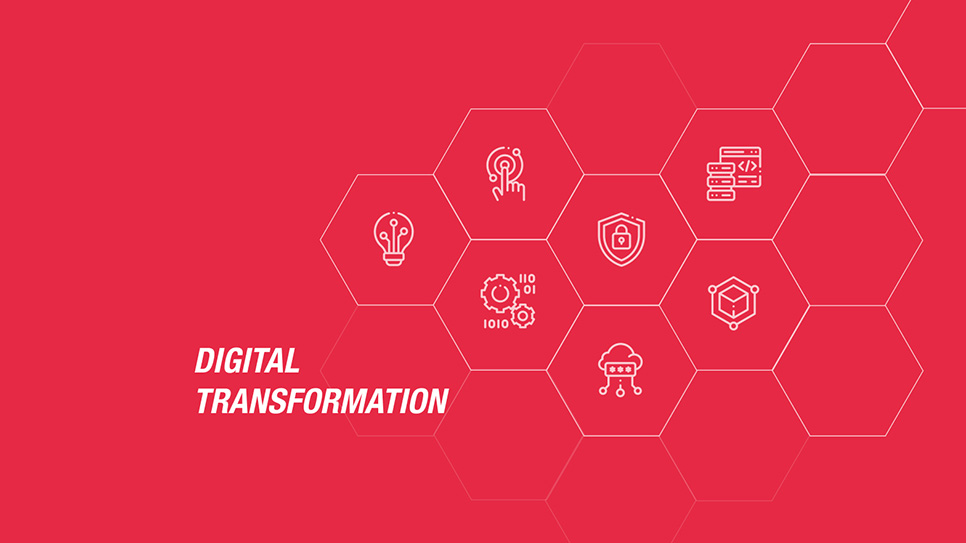What does the future hold for digital transformation?

We currently live in a world where everything is at our fingertips. This is the result of extensive digital change. In recent years, the digital world has changed at a rapid pace which makes it difficult to keep track of how to progress, adapt, and how to manage your business because there is a lot to manage.
Competition is fierce, and if you are not engaging in the digital transformation you are missing out on a lot. However, in the last five years, many things have changed in the digital sphere. So, let’s look at what’s next for digital transformation, but first, let’s understand digital transformation.
What is Digital Transformation?
The integration of digital technologies into your business’s outlook operations and delivery of services to customers is known as digital transformation.
Ultimately, it’s about a cultural shift in how people use technology. It has an impact on how we do things in our daily lives, from making a grocery list to keeping track of employee information- it affects every nook and cranny.
So, how does digital transformation affect your business?
Instant Digital changes might disrupt the current operations of any business. Businesses must ensure that they are prepared for the impact of digital transformation on their business model, including educating employees in relevant skills, budgeting for future expenditures, and changing business procedures.
Digital transformation challenge businesses’ present operating models, pushing them to become more comfortable with new technology and innovation, as well as do things differently.
Top Digital Transformation Trends You Should Know
1) 5G will be the new normal
With the convenience of digitalization, businesses are striving to operate operations from their homes and other remote places. While 4G has acquired widespread adoption in recent years, 5G will gain even greater traction in the next few years.
The 5G network can offer relevant data and connections, addressing the growing need for additional capacity and reliable connectivity. The implementation of 5G will raise IoT connectivity demand, promote digital collaboration, and accelerate digital transformation.
2) Customer Data Platforms (CDPs)
Customer Data Platforms (CDPs)have been increasingly popular in recent months, and for good reason. Data that has been fragmented from several sources are traditionally difficult to organize, which is problematic for organizations that rely on timely, well-curated data to perform.
The Customer Data Platform (CDP) is a complete customer database that helps businesses gather, analyze, aggregate, activate, and execute data from both online and offline sources which saves time and money at the same time.
3) Extended Reality (VR/MR) – Virtual and Augmented Reality (XR)
These words refer to technology that uses glasses or headsets to project computer-generated graphics directly into the user’s field of view. When overlaid atop what the user sees in the real world, it’s called augmented reality (AR). VR is when a user is completely immersed in a computer-generated environment.
You may anticipate seeing these, as well as the other advancements mentioned. This will mostly consist of supporting us in avoiding potentially dangerous situations when virus transmission is a possibility. AR technology will deliver real-time notifications as we go through areas where the infection is known to have spread.
4) Artificial Intelligence (AI): Digital Transformation pillar
AI is already one of the most significant technological advances, and this year, it will become an even more important tool for analyzing and comprehending the world around us. We will continue to collect more data on healthcare, infection rates, and the success of pollution solutions. As a result, the responses gleaned by machine learning algorithms will become more knowledgeable and involved. Businesses will have to be able to spot new patterns of behavior.
5) Internet of Things (IoT)
IoT-driven innovation has emerged as one of the most important foundations of competitive differentiation. Wearable electronics for health monitoring, IIoT in manufacturing, and IoT in warehousing will be areas of focus in the future, while connected gadgets will remain popular due to their simplicity.
6) Cybersecurity: A concern in the Digital transformation
In the aftermath of the pandemic, cybersecurity has become a serious worry. There is a greater danger of perimeter security being compromised in a highly digitally connected world when businesses allow employees to access data from safe outside networks.
As everyday cyber threats increase businesses must strengthen their networks and enhance their cybersecurity.
The Future Of Digital Transformation: 2030 and Beyond
Blockchain may add $3 trillion to global value by 2030. The rise in cyber reliance will need considerable advances in enterprise security, with blockchain being used for everything from passwords to ID badges.
It is predicted that only fully automated (self-driving) automobiles are expected to be available for purchase in the United States. Drones might contribute £42 billion to the UK economy by 2030, according to the automation industry.
In more economically developed countries, the 6th generation of mobile communication is anticipated to emerge.
In the digital realm, quantum computing will continue to be a disruptive force. Companies may have already budgeted for this in their digital business strategies by 2030.
Does your business need a Digital Transformation roadmap?
There is no doubt that your business requires a digital transformation roadmap in this ever-changing digital ecosystem. You may be required to drop a long-standing business practice that has served your firm well for many years. You must learn to be more adaptive to change.
The challenges and demands of your business can be used to create a digital transformation roadmap. However, before diving into the concept, any business should address the following issues first:
- Customer satisfaction and expectations
- Your services should be flexible
- Excellent leadership and culture
- Workforce
- Current digital capabilities of your business
Businesses should understand that disruption in the digital environment brings possibilities. Every time the landscape shifts, businesses will have the opportunity to strengthen and solidify their positions.
Conclusion
It will be critical for businesses to adapt to digital transformation in the future. Rather than reacting to events, organizations will require precise roadmaps detailing how they will digitize their business operations in order to meet present and future objectives. Supply chain efficiency, resilience, and sustainability should all be priorities in these initiatives.
Having a helping hand by your side when things are a plus when changes take place, and at LN Webworks, we stay on top of the current challenges and changes. Our digital professionals understand how to seamlessly integrate the newest digital transformation improvements into any business process. Visit us today for a better understanding.


